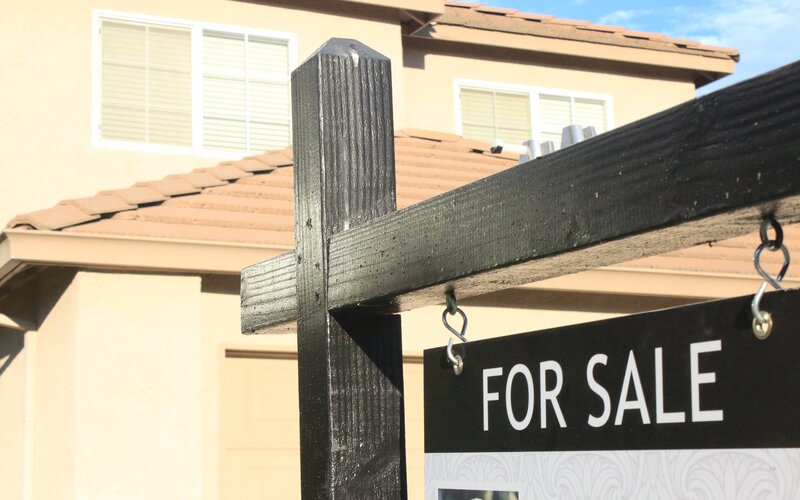Dwelling values in Australia rose 0.6% in April, on par with the gains in February and March, to take the national median to $779,817.
April was the 15th month straight prices have risen, with the national median up 11.1% or about $78,000 from January last year.
The Perth market continues to lead the way gaining another 2% in April, a slight reacceleration in the pace of growth from March (1.9%).
Brisbane (up 0.9%) and Adelaide (up 1.3%) were the next strongest performers, although both saw slight declines from the growth recorded in March.
Sydney rose 0.4% through the month, with the median dwelling value now at $1,145,931 which is just 0.83% lower than the all time peak of January 2022.
Perth remains the talk of the town though, and CoreLogic research director Tim Lawless says there are no signs of things cooling in the WA capital.
"The quarterly pace of growth, at 6%, is approaching the cyclical highs seen during the pandemic when interest rates were at rock bottom," he said.
"In Perth, homes are selling at a median of just 10 days and discounting rates are averaging just 2.4%."
At the same time, Mr Lawless said the April numbers could be the start of a more sustained slowdown in the hot Brisbane market.
"Affordability pressures may be impacting the pace of growth across the city, following a nearly $300,000 increase in values since the onset of COVID in March 2020, the largest dollar value increase of any capital," he said.
Regions outpacing capitals
The combined regional property price was $622,781 at the end of April, up 0.8% from March, while the combined capitals only gained 0.6% through the month.
The regional boom during the pandemic, when demand shifted fairly dramatically away from the big cities, reverted to normal in 2023.
This year however has seemingly seen another surge in demand outside of the state capitals.
Regional areas have gained 2.6% so far in 2024, compared to 2.1% for the capitals, although the growth in the capitals since April '23 is still above the equivalent annual growth for the regions.
Western Australia (up 6.3% since the start of the year), South Australia (up 4.4%) and Queensland (up 4.1%) have been the strongest performing regions so far this year.
This correlates with the capitals: Perth, Adelaide and Brisbane have also consistently seen property prices have increased the most in 2024, so demand looks strong across the entirety of these states.
Since April 2023, these regions have seen the biggest price increases:
| SA3 | SA4 | State | Median price (April '24) | Annual change |
| Bunbury | Bunbury | Western Australia | $555,430 | 19.9% |
| Barossa | Barossa-Yorke-Mid North | South Australia | $596,459 | 17.9% |
| Yorke Peninsula | Barossa-Yorke-Mid North | South Australia | $431,025 | 17.3% |
| Southport | Gold Coast | Queensland | $873,018 | 16.6% |
| Augusta-Margaret River-Busselton | Bunbury | Western Australia | $820,210 | 16.4% |
| Buderim | Sunshine Coast | Queensland | $453,244 | 16.3% |
| Manjimup | Bunbury | Western Australia | $494,421 | 16.0% |
| Townsville | Townsville | Queensland | $453,244 | 15.3% |
| Wheat Belt - North | WA Wheat Belt | Western Australia | $371,159 | 15.1% |
| Rockhampton | Central QLD | Queensland | $484,198 | 14.8% |
Rate cuts delayed?
With supply not keeping pace with demand for Australian property, prices have risen in spite of the high RBA cash rate.
Higher rates usually mean less affordable home loans, less demand to buy and subsequently less heat in the market, but an undersupply of houses and units has seemingly more than offset any reduction in demand.
Mr Lawless says this mismatch "doesn't look like it will change in the near future," but said high interest rates remained a "downside risk" for housing markets.
Prospective home buyers who feel priced out of the market at the moment therefore may have mixed emotions about last weeks inflation numbers, with prices rising 3.6% over the year to Q1 '24, above expectations.
This has seen several economists, including Gareth Aird from CommBank, revise cash rate expectations, suggesting rate cuts could now be delayed until at least November.
This upside surprise to inflation could also mean household budgets are strained for longer, which could further reduce demand.
Although high rates for longer hurts people's borrowing power, it could also work against property prices growing further out of reach for many Aussies.
Picture by David Broadway on Unsplash

Ready, Set, Buy!
Learn everything you need to know about buying property – from choosing the right property and home loan, to the purchasing process, tips to save money and more!
With bonus Q&A sheet and Crossword!



 Denise Raward
Denise Raward
 Harrison Astbury
Harrison Astbury

 Hanan Dervisevic
Hanan Dervisevic
 Brooke Cooper
Brooke Cooper

